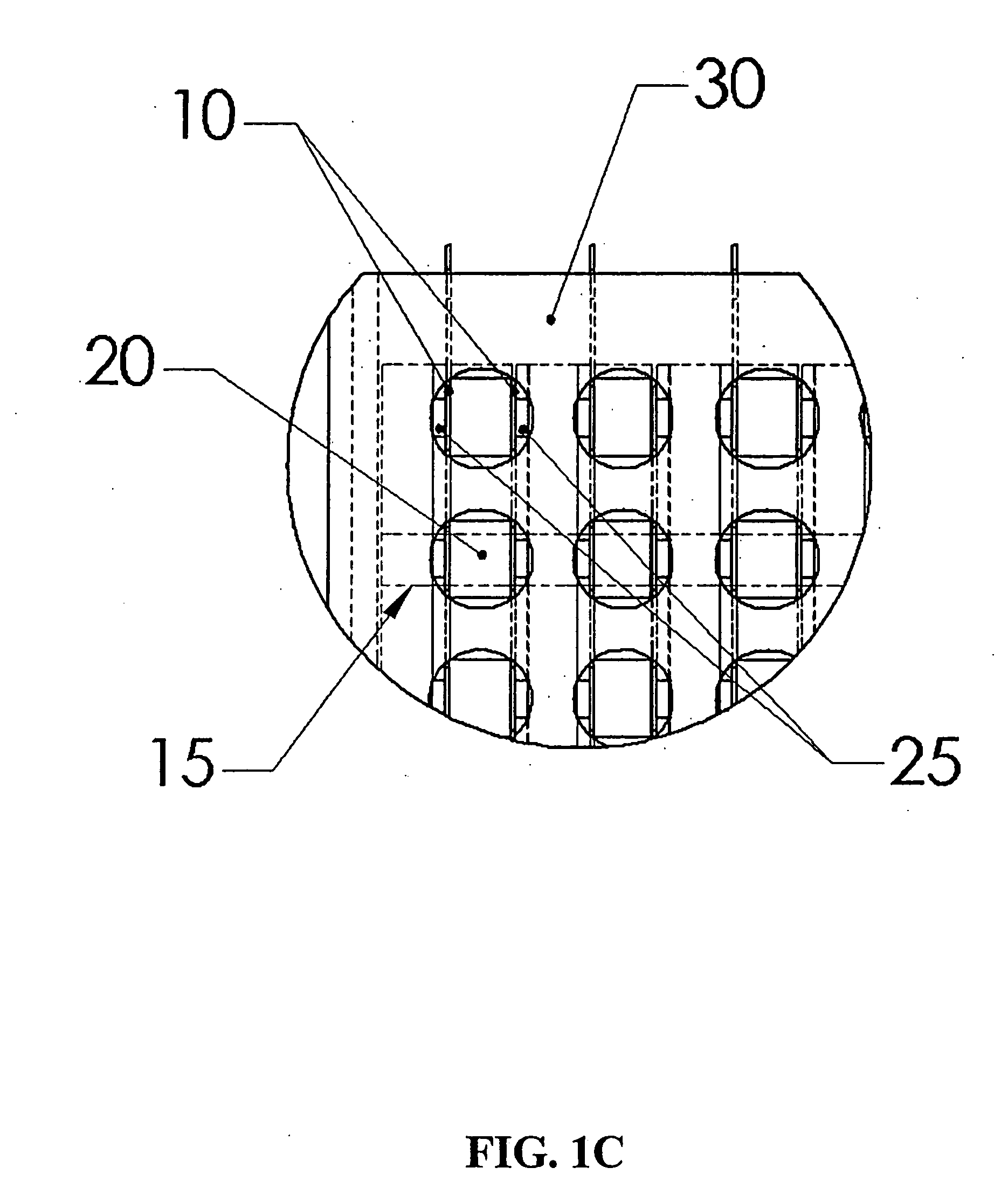Ion channel assay methods
a technology of ion channel and assay method, which is applied in the field of ion channel assay method, can solve the problems of low throughput of patch clamp technique as a general method in pharmacological screening, inability to easily automate the technique, and extensive analysis by skilled electrophysiologists
- Summary
- Abstract
- Description
- Claims
- Application Information
AI Technical Summary
Benefits of technology
Problems solved by technology
Method used
Image
Examples
example 1
1. Example 1
Analysis of the Electrical Field Uniformity of Parallel Plate Electrodes in Standard Round Wells
[0423] To analyze the effect of various electrode, and well designs, a series of two-dimensional numerical simulations of the electric fields were produced using the software analysis package Quickfield™ 4.1, (Student's Version, Tera Analysis, http: / / www.tera-analysis.com). This software package creates coarse-grained mesh type electrical field intensity maps by solving Poisson's equation with a finite-element analysis method in two dimensions. For the purposes of this analysis, the fringing effects due to the gap between the bottom of the electrode and the bottom of the well were ignored, and the voltage drops from the electrodes to the saline were also assumed to be negligible. The spatial resolution of the modeling is approximately 0.5 mm.
[0424]FIG. 7A shows the results of the simulation using 4 mm wide parallel plate electrodes (710) with a 4 mm gap with a standard elect...
example 2
2. Example 2
Analysis of the Electrical Field Uniformity of Pin Electrodes in Standard Round Wells
[0425] To determine the predicted field uniformity for two 1.0 mm diameter round pin electrodes placed in a standard 6.2 mm diameter well, separated by a distance of 4.0 mm, simulations were completed with the same conditions and assumptions as described in Example 1.
[0426] In FIG. 7B, the outer solid circle (705) is the edge of the well, the two smaller circles (715) are the electrodes, and the dashed circle in the middle is the area of observation. The gray area (745) is the area in which the electric field remains within ±10% of the mean field in the area of observation. In the white area (735), the field is less than 10% of the mean, and in the black area (755), the field is more than 10% greater than the mean field. Within the area of observation (725), the standard deviation of the field strength is 15% of the mean, and the difference between the maximum and minimum fields is 87%...
example 3
3. Example 3
Analysis of the Electrical Field Uniformity of Parallel Plate Electrodes in Square Wells
[0427]FIG. 8A shows a simulation of the field profile for two 6 mm wide parallel plate electrodes with a 4 mm gap in a 6.2 mm square well. In this figure, the outer square (800) is the edge of the well. The two vertical lines (810) are the electrodes. The dashed circle in the middle (820) is the area of observation. Of particular note is that the electric field scale for FIG. 8 has been greatly amplified compared to FIG. 7 to provide contrast for the variations in electrical field intensity. The gray area (840) is the area in which the electric field remains within ±1% of the mean field in the area of observation. In the white area (830), the field is less than 1% of the mean. In this simulation, at no point is the field more than 1% greater than the mean field. Within the area of observation, the standard deviation of the field strength is 0.02% of the mean, and the difference betwe...
PUM
| Property | Measurement | Unit |
|---|---|---|
| diameter | aaaaa | aaaaa |
| diameter | aaaaa | aaaaa |
| electric field strength | aaaaa | aaaaa |
Abstract
Description
Claims
Application Information
 Login to View More
Login to View More - R&D
- Intellectual Property
- Life Sciences
- Materials
- Tech Scout
- Unparalleled Data Quality
- Higher Quality Content
- 60% Fewer Hallucinations
Browse by: Latest US Patents, China's latest patents, Technical Efficacy Thesaurus, Application Domain, Technology Topic, Popular Technical Reports.
© 2025 PatSnap. All rights reserved.Legal|Privacy policy|Modern Slavery Act Transparency Statement|Sitemap|About US| Contact US: help@patsnap.com



